Wait, What's the Difference Between Tequila and Mezcal?
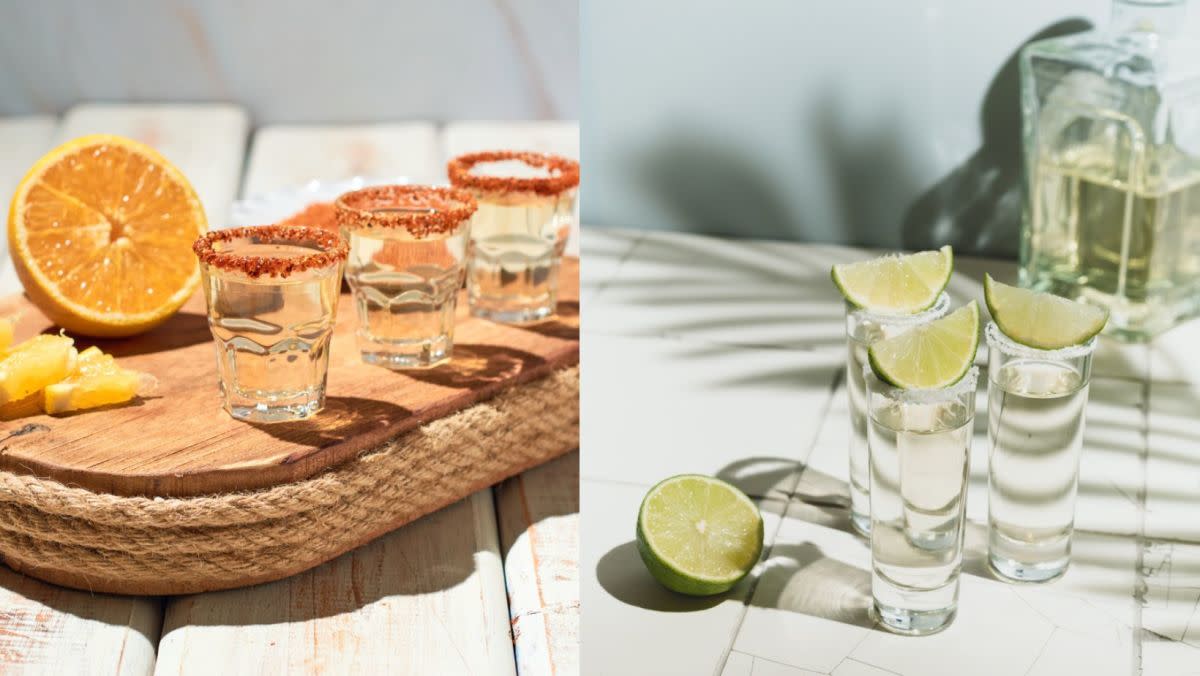
Mezcal vs. Tequila
If you're in the mood for a margarita, you pretty much know that you're looking for a bottle of tequila at the liquor store. But when you get there you might be reminded that there are many variations of tequila and then there's mezcal, which is similar to tequila but not exactly the same. If all of it leaves you scratching your head in the store aisle, you're not alone.
And your confusion is 100% understandable. Tequila and mezcal are both made from the agave plant, so the two spirits are very similar. And oftentimes the differences vary from brand to brand, which can make telling the difference between the two that much harder.
To help you make sense of it all, we chatted with three spirits experts to sort out the difference between tequila and mezcal—how they're made, what they taste like, how to use them—before your next trip to the liquor store.
Related: 9 Types of Vodka Explained by Bartenders and Other Drink Experts
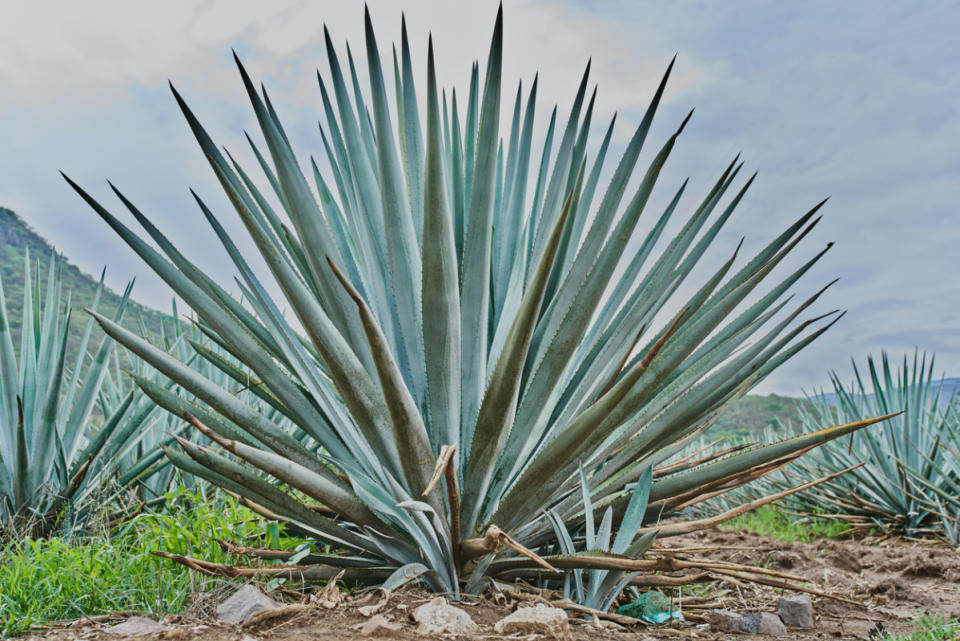
iStock
What is Tequila?
First, we have to define exactly what tequila is. According to Resa Mueller, Mana Ohana Bartender and Bartender at R&D Philly located in Philadelphia, PA, tequila is “a spirit made from at least 51% Blue Weber Agave in the state of Jalisco [in Mexico] or limited municipalities in one of 4 other states [Guanajuato, Michoacan, Nayarit, or Tamaulipas].” Blue Weber Agave—also referred to as ‘blue agave’ or ‘tequila agave’—is a species of agave plant with tall flat leaves and a blue-green color. The Tequila Regulatory Council categorizes tequila into five classes:
Blanco Tequila: Translated to ‘white tequila’ from Spanish, this spirit is clear because it’s normally bottled directly following production and its strength is only altered with water.
Joven Tequila: ‘Young’ tequila, is essentially a blend of unaged—blanco—tequila and aged tequila. Depending on the types of tequila that are blended, the color will range from clear to light gold.
Reposado Tequila: The Spanish word reposado means ‘restful.’ Reposada is a type of tequila that is aged from anywhere from two to 11 months, which gives it a richer, deeper flavor than a blanco or joven tequila.
A?ejo Tequila: A?ejo—translated to ‘old’—tequila is a premium-sipping tequila. It’s aged in oak barrels between one and three years. Because the booze sits in the barrels longer, it has a darker color and often has toasty notes of vanilla and caramel.
Extra A?ejo Tequila: This ‘extra aged’ tequila has been aged for a long period of time, typically for more than three years. You can spot it due to its dark amber color and reddish tints and its rich flavor.
Related: The 30 Best Tequila Brands for Sipping, Shots & Margaritas According to Master Distillers
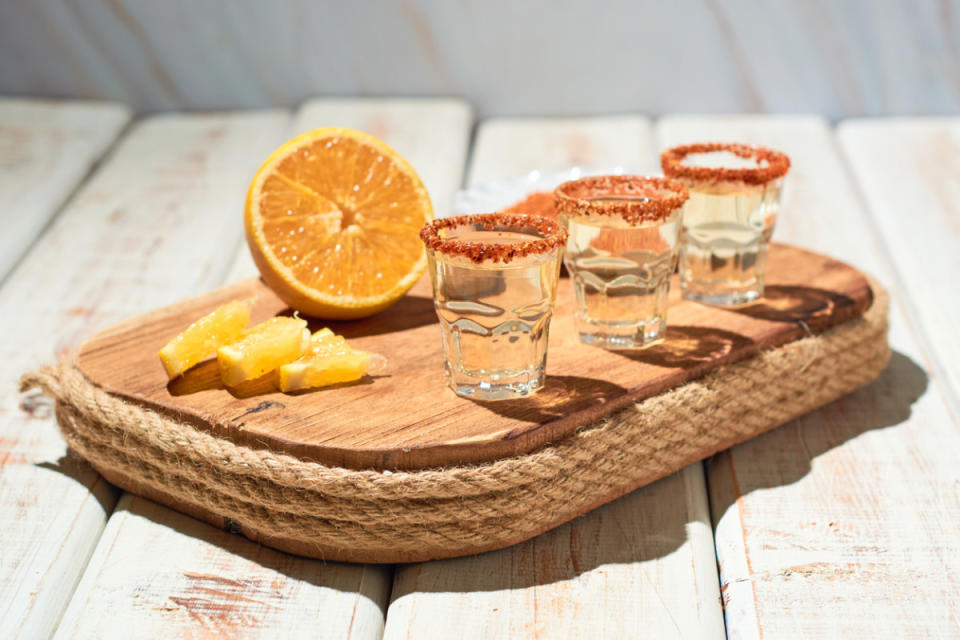
iStock
What is Mezcal?
Like tequila, mezcal is made from the agave plant. However, mezcal is a broader category than tequila because the spirit can be made using any variety of agave or maguey (a plant member of the agave family) if it's been produced and grown within the Denominations of Origin, says Philip Bayly, Co-Editor of The Tequila Ambassador V.O. and an agave expert. Mezcal mainly derives from the Mexican state of Oaxaca, but can be made in eight other defined municipalities in Mexican states—Guerrero, Guanajuato, Michoacán, Zacatecas, San Luís Potosí, Tamaulipas, Durango and Puebla, according to Rodrigo Bojorquez Bours, Master Distiller for Kilinga Bacanora, in álamos, Sonora, Mexico.
All of these very specific distinctions boil down to one thing: because mezcal has a much broader definition than mezcal, all tequila is mezcal but not all mezcal is tequila.
And like tequila, mezcal is also available in several different styles.
Blanco: Similar to tequila blanco, mezcal blanco is a clear, unaged spirit.
Madurado en Vidrio: Meaning ‘matured in glass,’ this type of mezcal is aged in glass containers for more than 12 months underground or in an area with little changes in light, humidity and temperature.
Reposado: This style of mezcal is aged for a minimum of two months to one year in oak barrels, which gives it a richer color and flavor.
A?ejo: Mezcal that's been aged for more than one year, which deepens the color and the flavor.
Related: 9 Popular Costco Liquors, Ranked From the Bottom(s) Up
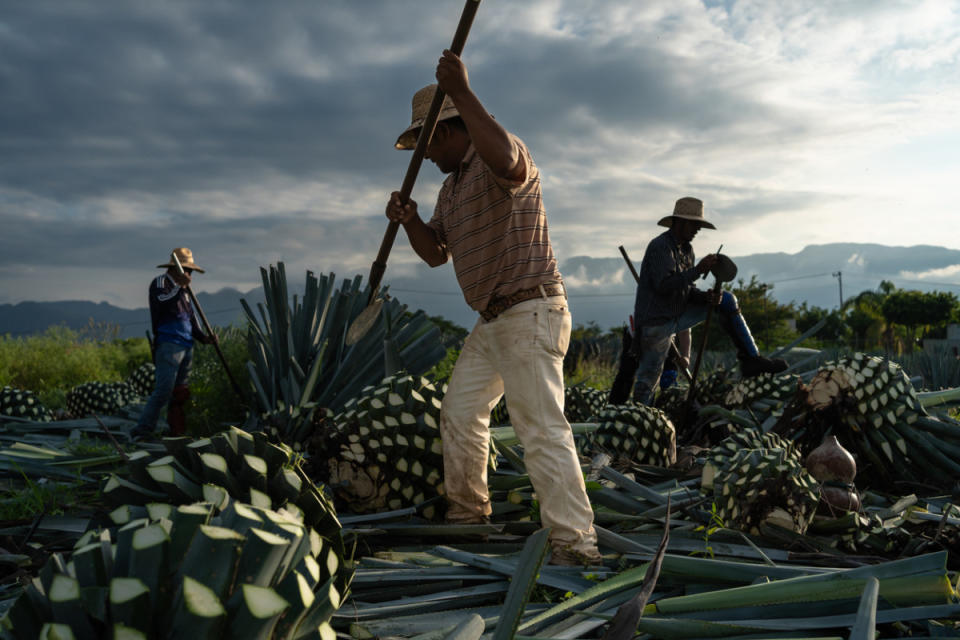
iStock
How are Mezcal and Tequila Made?
“Historically, batches of certain agave spirits were distilled by families to celebrate special occasions like baptisms, weddings or funerals, as well as for personal consumption following recipes passed down through generations,” says Bours.
But these days, the process is a little more codified. According to Bayly, both tequila and mezcal may only be produced under strict guidelines within the defined Denominations of Origin.
Basic tequila production is a 4-step process:
? Harvesting The blue Weber agave plant is harvested between 6 and 8 years old, but the level of maturation is determined by the individual tequila producer, Mueller explains.
? Cooking The agave pinas (the heart of the plant that resembles a pineapple) are steam-cooked in brick ovens or a diffuser is used to convert them into sugars.
? Fermentation The cooked agave pinas are smashed and shredded to extract the juice, which is then fermented for a few days. Fermentation is essentially when “the yeast eats the sugars and turns them into alcohol,” Mueller says.
? Distillation The final step of the process is distillation, in which the tequila base is heated to help purify and concentrate the spirit. The distillation process is often done multiple times in large stills. After distillation, the tequila can be aged and/or flavored, depending on what style of tequila is being made.
Artisanal mezcal production, which is the most common mezcal category, is similar to tequila production, though it's done on a smaller scale in smaller batches, says Mueller. According to Bayly, mezcal made industrially accounts for 6% of mezcal production, artisanal mezcal accounts for 93%, and ancestral mezcal accounts for less than .5%.
The agave used to make mezcal is often cooked in a specific way, Bours says. “Mezcal typically uses a conical open pit oven made of rocks. The agave is roasted in these underground pits, imparting its signature smoky character that ranges from moderate to very powerful.”
Related: 21 Women-Led Spirits Brands You Need to Know About
How Do Mezcal and Tequila Taste?
You may have heard that mezcal is smoky and tequila isn't, but now that you know a little bit more about the wide world of agave spirits, you might guess that the answer isn't so simple.
If you're at a bar, it's pretty safe to assume that the mezcals listed on the menu will probably be smokier than the tequilas because that's the style of mezcals that most American bars will stock. That said, it's worth asking your bartender about the specific mezcals on the menu. Because mezcal is such a broad category of spirits and is often made in small batches, the flavor can vary widely.
On the tequila side, each brand and aging class of tequila has a different flavor, but Mueller opts for one that is “clean” and “straightforward.” For reference, Bayly says that common tequila brands like Herradura, Fortaleza, and Sauza tend to be “earthy, vegetal, and dry” and tequila giants like Don Julio, Patron, and Tequila Ocho have more of a “sweet, fruity, and floral” flavor profile.
Related: 9 Black-Owned Whiskey Brands You Need to Try
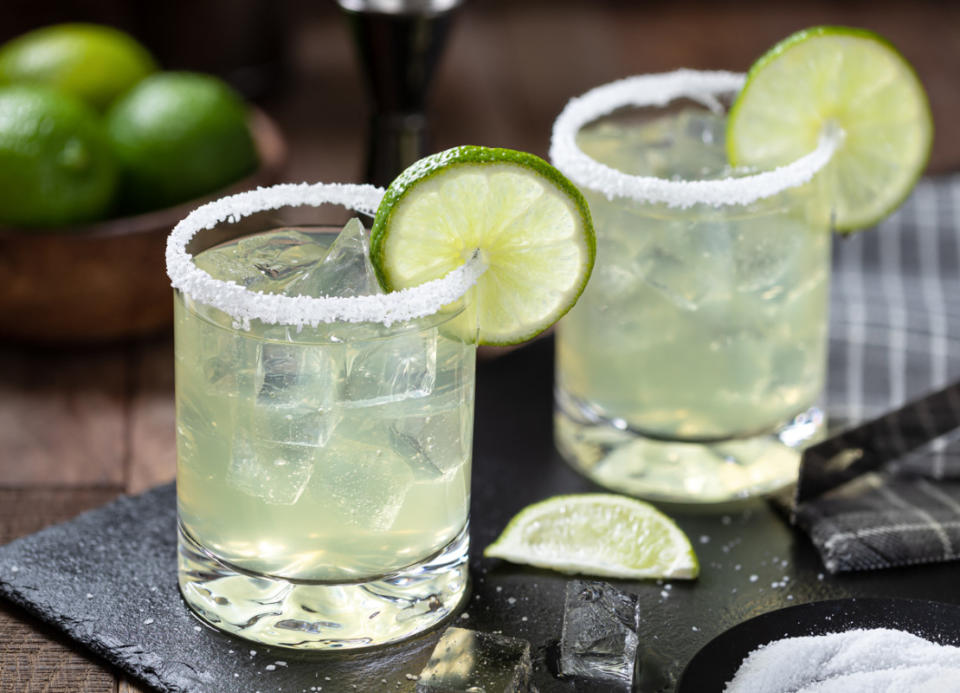
iStock
What Are the Best Uses for Tequila and Mezcal?
Mezcal is often used as a sipping spirit, but it can also be great in a cocktail. Bayly recommends a mezcal negroni, a mezcal mule, or a smoky margarita.
Tequila is the go-to base spirit for margaritas, of course. Both Bayly and Bours note that Tommy’s Margarita—tequila, lime juice, agave nectar and a sugar or salt rim—is giving the traditional margarita a run for its money. A paloma, which is a combo of tequila, grapefruit soda and a splash of lime served over ice, or a tequila old-fashioned are some other tasty options.
Related: The 15 Best Irish Whiskeys That Are Flying Off Liquor Store Shelves
Can Tequila and Mezcal Be Used Interchangeably?
The short answer is, yes, tequila and mezcal can be used interchangeably with some slight tweaking of cocktail recipes. Bayly says, “Any classic cocktail tends to work well by changing the base spirit. It's merely a matter of finding a similar style. For example, a blanco tequila or mezcal can replace gin, and an a?ejo tequila can replace whisky. A very chilled, soft, light blanco tequila can replace vodka.” So really, you can’t go wrong no matter which spirit you choose and part of the fun is shaking and stirring and tasting and testing until you get a cocktail that's just right for you.
Up next: 27 Canned Cocktails That Were Made for Drinking Outdoors
